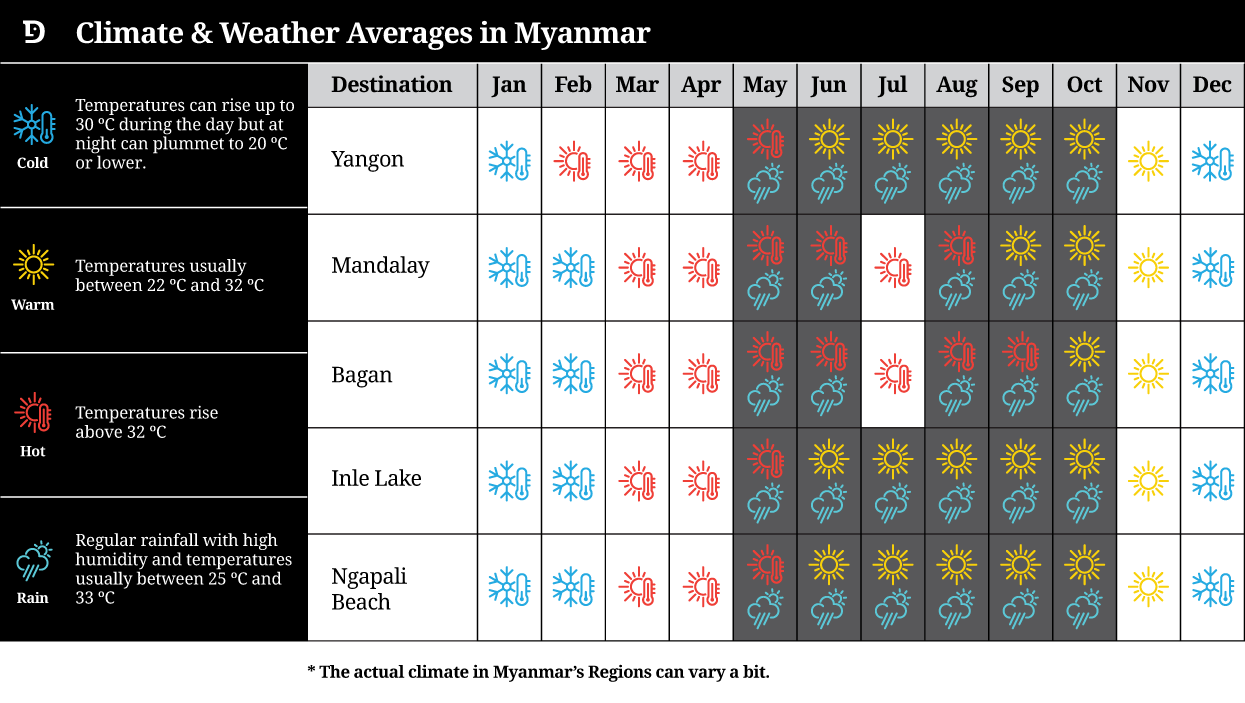Healthcare
When the World Health Organisation (WHO) last ranked Burma's system against other countries, it took position 190 out of 190 countries for its "overall health system performance". If you can help it, get treated outside the country; Thailand's world-class healthcare is a short flight away. It is highly recommended that you have travel insurance that has evacuation coverage. If you are going to do any trekking or bicycle tours, or anything with a degree of risk, this option is practically a necessity.
Transport
Myanmar's transport system can be a little rough but should get you where you're going. High-quality buses are beginning to be used by big bus companies and run routes between the main tourist sites, but otherwise you'll find the buses much less impressive -- they can be anything from adequate to rough. Trains are commonly late and extremely bouncy, but they too are being upgraded with new imports. Domestic flights can be cancelled or rescheduled for no other reason than a lack of enough passengers, so make sure that you don't count on flying into a city the same day you depart on an international flight. A local travel agent will be able to give you the best options for flights.
Visas
The visa system is evolving. As of mid-2016, visas on arrival are available at some international airport entry points and, with a pre-issued visa, foreigners can enter via a range of overland entry points. If you overstay a visa the fine if US$3 per day.
Language
The national language is Burmese, which uses a non-Roman script and has three main tones. The basics can be easy but grammatical structure is difficult to learn, though there are tall-tale signs that revolve around the ending of sentences. If a sentence ends in 'deh' or 'meh' it is a statement. If it ends in 'bu' it is a negative (or 'no'). If it ends in 'la' or 'leh' it is a question. Many people do speak English, and well, but many will speak none. In some states you will find the locals using a different language as their mother-tongue, and sometimes they will not speak Burmese at all.
Weather
There are three seasons: hot, rainy and cool. Late February to June is hot season, and no matter where you come from in the world, you will find it very hot. Yangon gets especially steamy as it has a high humidity level throughout the year. Rainy season happens from June until October and can be pleasant if you are north of Yangon, but the monsoon from Yangon down through the south can bring a relentless amount of rain and flooding. Cool season, from late October to February, is by far the most pleasant time to visit, as you will find little rain or sweat to keep you wet.

Burma is overall one of the least developed countries in Southeast Asia
Due to political reasons and sanctions, for nearly 50 years, Burma has only truly begun to see an influx of international visitors recently. Yangon is the most developed city in the country, but even there black-outs and floods are common. Burma is not a destination for those seeking luxury and smooth service, but it's a top spot for those who seek to experience local flare and adventure.
Burma, the golden land
Burma is rich in history and culture. The locals are very friendly, the country is very safe to travel around, and the sights can be stunning. Prices can be high, especially when it comes to accommodation, and the value for dollar can be poor compared to other countries such as Thailand. There is much to experience off the tourist trail, and getting off the trail is well worth the effort and time required, though this can obviously be difficult for those on a tight schedule. The most popular destinations are getting busier, but still do not compare with the high volume of visitors other destinations in more mainstream countries see. It is easy to see that the most popular cities and sights will not have the same vibe in the next five years; now is the time to get a true rich taste of this golden land.




.jpeg)
.jpg)



.jpg)








